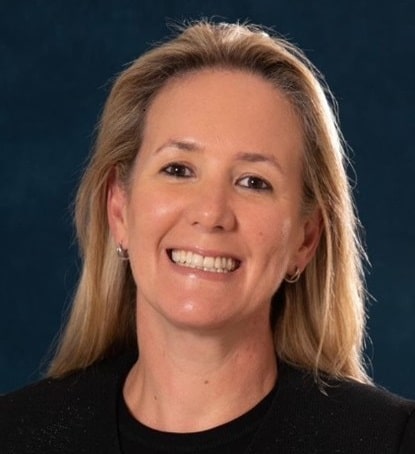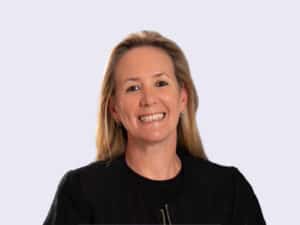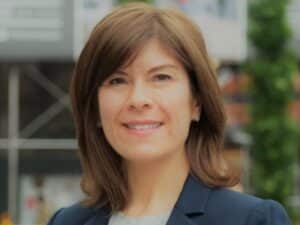From CMO to CCO: the shift towards customer centric growth
Over the past two to three years, we have seen the role of Chief Marketing Officer expanding into the role of Chief Customer, Client or Commercial Officer (CCO).
Our own Emma Jerome sat down with Claire Blackwell – one of the first Chief Client Officers in the UK’s financial services sector – to discuss what is driving this trend, the significance of these roles and whether the change in terminology is merely a matter of semantics.
Claire is a multi-award-winning business leader in the global financial services industry. Her key areas of specialism are marketing, customer experience, communications, client service and business development. She has over 25 years of experience across retail, private wealth and institutional channels.

Over recent years, she’s worked on major customer-centric projects such as building a future-fit target operating model for an in-house marketing agency servicing 4500 financial advisers. She also rebranded a FTSE-100 financial services firm – including game-changing sponsorships and consumer duty readiness for a business with 1 million clients.
Originally South African, Claire has worked at St. James’s Place, Newton Investment Management, Mercer Investment Consulting and Ninety One. She is currently exploring her next opportunity.
Here’s what Emma covered with Claire:
- Can you tell us about your role and career to date?
- What is a CCO and how does it differ from a CMO?
- What’s driving this shift?
- How can you set this role up for success?
- What is the succession for this role?
- What factors should an organisation consider when deciding whether to hire a CCO or CMO?
Can you tell us about your role and career to date?
I have had the opportunity to work with some amazing people on diverse, pioneering projects. I came to financial services by a circuitous route, studying nursing and environmental science at university in South Africa. My first role was with Ninety One (then Investec Asset Management) in Cape Town. I was so privileged to find them – an authentic, passionate bunch of people who inspired me. They also brought me to London over 20 years ago which was an opportunity that I embraced.
“I don’t see them as distinct roles in most organisations, particularly in financial services. The CMO role has expanded into the CCO role.”
I moved into investment consulting to gain a global understanding of the investment management industry from both a client and provider perspective. My role with Mercer Investment Consulting developed into Global Director of Business Development and Marketing.
Returning to asset management, I joined Newton Investment Management where I was responsible for marketing strategy and global implementation. Stakeholder and relationship management was key here as I was working in partnership with the BNY Mellon distribution model, which varied globally by geography and channel.
“I believe the position should be called Chief Customer Officer because it emphasises the need for the role to drive organic growth and deliver differentiated value through the lens of new and existing customers.”
However, I had the opportunity to lead inspiring projects in sponsorship, digital strategy, advertising and events. I also got married and had two children at this stage! When St. James’s Place approached me, I was ready for the next challenge and a more consumer-facing role.
The SJP role was multi-faceted, operating at both a strategic and tactical level. Initially, I transformed the in-house marketing function to meet the 2025 strategic objectives. I led the rebrand of SJP, culminating in a through-the-line advertising and sponsorship campaign to drive positive awareness and reconsideration.
I was later responsible for ensuring customer-centric thinking throughout the organisation and that good client outcomes were met and measured. Late last year, I left SJP and I am now looking forward to finding the next opportunity.
What is a CCO and how does it differ from a CMO?
First, let’s address the terminology and what a CCO does. I believe the position should be called Chief Customer Officer because it emphasises the need for the role to drive organic growth and deliver differentiated value through the lens of new and existing customers.
In my opinion, referring to the role as Chief Commercial Officer shifts the focus from the customer and instead emphasises sales or revenue. Whilst this might be culturally appropriate for some firms, I believe there is a growing need for organisations to prioritise the needs of consumers in order to drive revenue.
I also wouldn’t recommend calling it a Chief Client Officer (even if, ironically, that was my last job title!) as this title may focus the role too much on the servicing responsibilities of the firm and not enough on growth aspects. While evaluating and managing the perspectives of both new and existing customers is essential, the Chief Customer Officer’s primary focus should be on the acquisition phase.
“If companies want to grow their customer base, they need to align the experience that the customer wants with the one that they might want to offer.”
So then, let’s address the CCO/CMO differentiation. I don’t see them as distinct roles in most organisations, particularly in financial services. The CMO role has expanded into the CCO role. This is because customer experience has become such a key factor in brand differentiation that I don’t think it (in most cases) can be split from the brand and marketing function.
Below the CCO role, there could be ‘director level’ marketing positions that might be distinct from other functions sitting under the CCO, e.g. brand, communications, data and insights, channel marketing, campaigns and customer experience/journey. Having all these functions under one C-level role will foster collaboration across the functions and strengthen the brand, all the time through the lens of ‘customer first’.
The delineation of where the CCO role begins and ends comes later in the customer journey, at a post-sales/customer acquisition position. It’s at this stage that I think the CCO role hands off to a COO/ongoing relationship manager/serving function.
What’s driving this shift?
Ultimately, this is driven by commercials. Consumers are increasingly emphasising personalised experiences, convenience and authenticity. They prioritise brands that align with their values and expect experiences that meet their desires rather than those a company dictates. Digital platforms and social media primarily influence this shift.
As a result, their experiences are shaped by factors beyond the sales channels that the company provides. Therefore, if companies want to grow their customer base, they need to align the experience that the customer wants with the one that they might want to offer.
“Consumers want to experience financial products and services in the same manner as they experience phones, cars and entertainment.”
Other factors include the increased use of technology and the availability of rich data. COVID exacerbated the merging of the sales and marketing funnel and the online customer journey, which inextricably links online reputation, digital experience and sales. Shifting demographics play a role too – millennials are core consumers and they want products and services on their terms rather than on the provider’s.
This is particularly important for financial service brands to remember – consumers want to experience financial products and services in the same manner as they experience phones, cars and entertainment. If you wish for organic growth, you must understand what consumers want rather than purely marketing what is convenient to manufacture.
“The mistake that can be made with the CCO role is seeing the individual as a ‘silver bullet’ to solve all customer, client and commercial challenges.”
Data and tech have also taken much of the ‘guesswork’ out of marketing. The adage – “Half my advertising spend is wasted; the trouble is, I don’t know which half” – no longer exists as modern governance shouldn’t allow for wastage and a CMO would be very foolish not to have the data to prove precise return on investment.
In a market where ease and convenience are paramount, businesses would still need to adapt to meet rising customer expectations even without regulatory pressure. Still, if you layer in the regulatory pressures seen in sectors such as financial services, utilities and healthcare you need to be very clear about the target market, product and price.
How can you set this role up for success?
- Scope the role: the mistake that can be made with the CCO role is seeing the individual as a ‘silver bullet’ to solve all customer, client and commercial challenges. Therefore, the ‘scoping’ of the role at the start of the process is key to ensuring that the deliverables of the role are clearly defined
- Clarify with the executive team: ensure that the rest of the executive team is quite clear about what the role is and isn’t. This also includes delineating where the role’s responsibilities lie in the customer journey and where there is potential for overlap with other roles
- Align culture and communicate: it’s essential to communicate the strategic intent behind creating the role – and the role of culture in creating a customer-centric approach as it requires buy-in across the entire organisation. While the CCO plays a key role in operationalising customer strategies, success hinges on collective alignment across the business, led by the CEO and supported by the board. Ensure close collaboration with tech functions to understand customer needs better.
- Expand horizons: finally, trust your CCO to look beyond your sector to address knowledge gaps and enhance their ability to deliver more personalised customer interactions, ultimately contributing to a more customer-centric approach
What is the succession for this role?
At its heart, the role is about balancing internal and external stakeholder management. These leaders must serve as a bridge between customers and regulators, bringing an external perspective to traditional internal silos across front-office teams, technology and compliance.
When done well, CCOs can become a succession role for the CEO position. They serve CEOs as strategic sounding boards, ensuring that customer-centricity is embedded into every aspect of the firm’s growth strategy and that the customer’s voice is represented at the executive and board levels.
What factors should an organisation consider when deciding whether to hire a CCO or CMO?
It comes down to the stage and size of a business and how seriously you want to grow organically. Are you really prepared to invest in understanding your customers and their needs? Are you prepared to change if you find that their needs differ from what you are offering?
I think it also depends on how ready you are for the market. Are you aligned on all distribution elements – product, price, placement and promotion? If you aren’t, you need a CMO. But if you want that alignment in a weatherproof way for your future, you need a CCO.
Get in touch with us today to discuss your career or hiring needs.



